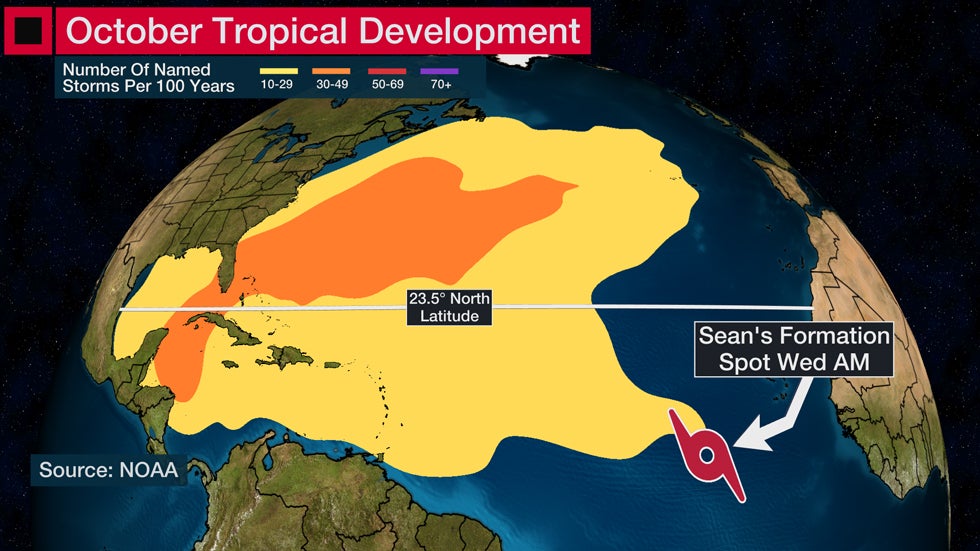Chris Dolce
Atlantic hurricane season is looking a bit unusual right now when compared to what we typically see in mid-October.
Takeaway on what's happening: Sean and another disturbance that's being watched for possible development, called Invest 94L, are both swirling in the eastern tropical Atlantic. This part of the Atlantic Basin is usually not a hotbed for named storm development this late in the season.
(MORE: Hurricane Season In October, November)

The formation spot of Sean set a record for the tropical Atlantic: Sean developed into a tropical storm Wednesday morning while located in the tropical Atlantic at 33.1 degrees west longitude. That makes it the easternmost-forming named storm on record in this region so late in the season, according to Dr. Phil Klotzbach, a meteorologist at Colorado State University.
The tropical Atlantic is the strip of ocean that stretches from Africa to the Caribbean south of 23.5 degrees north latitude. Named storms more commonly form in this region in the peak months of August and September.
In the map below, you can see Sean’s formation location compared to the historically favored areas of development in October.
 Sean’s formation location compared to the historically favored areas of development in October.
Sean’s formation location compared to the historically favored areas of development in October.Here's why this is happening and what the future holds for Sean: Sea-surface temperatures are still warmer than average in the tropical Atlantic, so that's one ingredient fueling this unusual eastern Atlantic activity. Low to moderate wind shear and moist air also aided in allowing Sean to develop from a disturbance known as a tropical wave that emerged from Africa late last week.
A benefit to Sean’s formation spot being so far east is it will never pose a threat to land because of increasingly unfavorable atmospheric conditions along its future path to the west-northwest.
It's too early to say what the future might hold for the disturbance called Invest 94L that's located east of Sean, so check back for updates.
Chris Dolce has been a senior meteorologist with weather.com for over 10 years after beginning his career with The Weather Channel in the early 2000s.
The Weather Company’s primary journalistic mission is to report on breaking weather news, the environment and the importance of science to our lives. This story does not necessarily represent the position of our parent company, IBM.
The Weather Company’s primary journalistic mission is to report on breaking weather news, the environment and the importance of science to our lives. This story does not necessarily represent the position of our parent company, IBM.

No comments:
Post a Comment